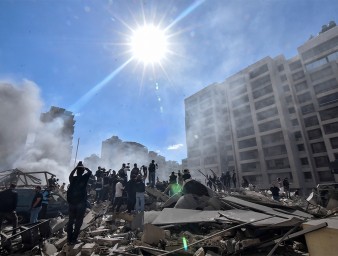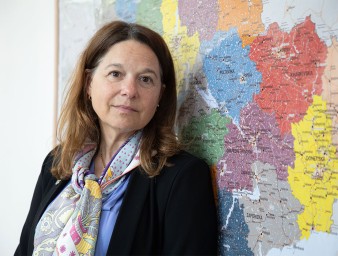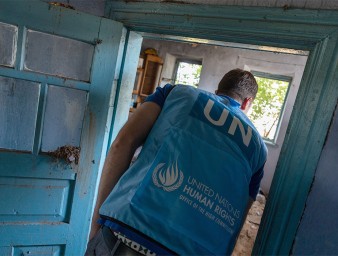Ukraine: Behind the numbers
26 April 2022
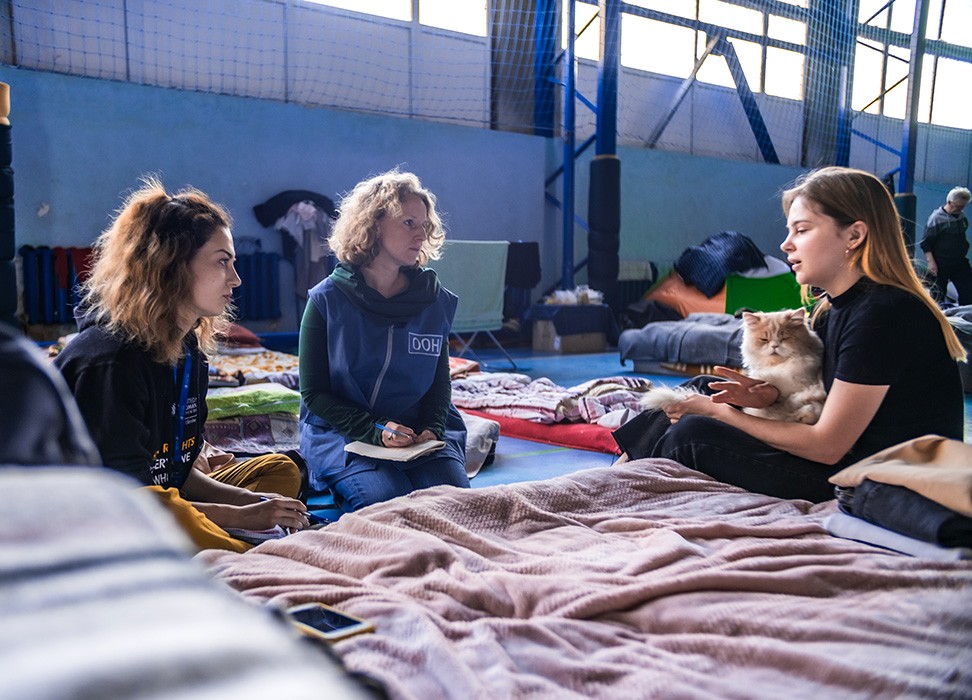
“It is hard to remember the exact date of my concussion. Under shelling, you get into this endless process, which has no dates,” said the man who had just fled Kharkiv in the east of Ukraine.
Nataliia* sat on the floor in the sport complex in Uzhhorod, in Ukraine’s west, listening to the man’s story, as well as many of the other internally displaced persons (IDPs) there. Nataliia is a human rights officer working with the UN Human Rights Monitoring Mission in Ukraine (HRMMU).
One of her key jobs now is to gather first-hand information on allegations of international human rights abuses and humanitarian law violations resulting from the armed attack of the Russian Federation on Ukraine. She talks to people on the ground, listens to their stories and documents what has happened to them or their loved ones. In the sports complex, she looked for information that can help to verify civilian casualty incidents that are happening across the country.
“Some people I talk to have lost their relatives and friends,” she said. “Some lost literally everything in their lives and have no place to go.”
“
Though it is hard at times, I know that our work is needed — we are documenting truth about the events, so that people could have justice in the future.
“
Nataliia*, human rights officer, Ukraine
Collecting accounts of victims and witnesses is just one facet of the monitoring work undertaken by HRMMU. But it is a vital piece – providing a trusted source of verified information on the human rights violations, including on civilian casualties that the Mission has been recording in Ukraine since 2014.
Using data to “clarify what happened”
To do this, human rights officers consult a broad range of sources.
When possible, they will visit the place where an incident took place and interview victims and witnesses. If it is not possible to visit the location of an incident, the Mission relies on an extensive network of trusted contacts, and partners, gleaned over the eight years it has worked in Ukraine. Also, human rights officers travel to different locations to visit IDP centres, like Nataliia did in Uzhhorod.
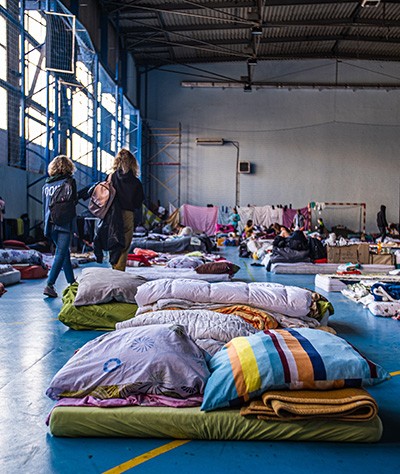
Internally displaced persons in a sport complex “Yunist”, Uzhhorod, western Ukraine. © Michael Fostik/OHCHR
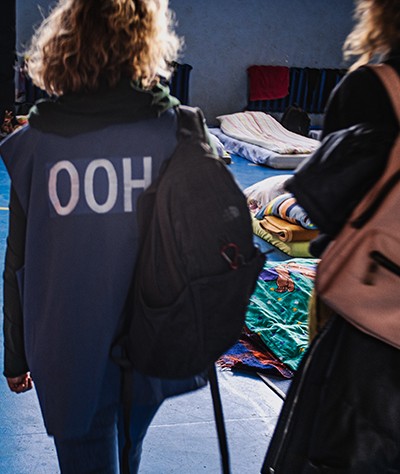
UN Human Rights officers visit a sport complex “Yunist” in Uzhhorod, which currently hosts internally displaced persons from areas affected by the armed attack of the Russian Federation on Ukraine. ©Michael Fostik/OHCHR
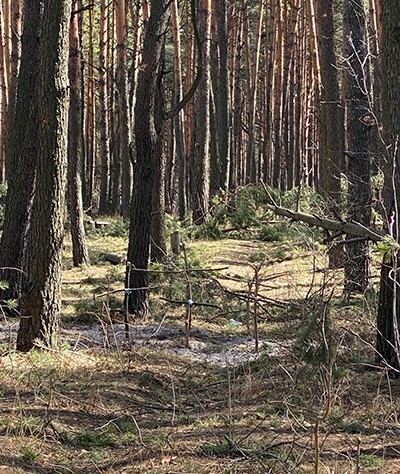
Five improvised graves with crosses made of wooden sticks in a forest near Irpin, Kyiv region. The authorities reported at least 267 civilian deaths in the town. © OHCHR
Data is also gathered through open sources. Monitoring staff will start the day by checking publicly available information — reports by local authorities, police, and emergency services. They also monitor photos, stories and video footage posted on social media and in media. All this data is carefully corroborated, said Olga*, a human rights officer.
“I am looking into different kinds of data on each and every civilian casualty case to clarify what, when and with whom it happened,” she said, explaining how the monitoring and data gathering process works.
“Just to give you one example: in the morning I see information that there was a civilian casualty in location A. I check all the available information on this case – videos, photos, official data, interviews etc. I also check more general data — what occurred in this location, what type of weapon was used” she said.
“Then if needed, I can request our field teams to verify this information on the ground with the available sources, for example, visiting the location of the incident or talking to victims and witnesses,” Olga added.
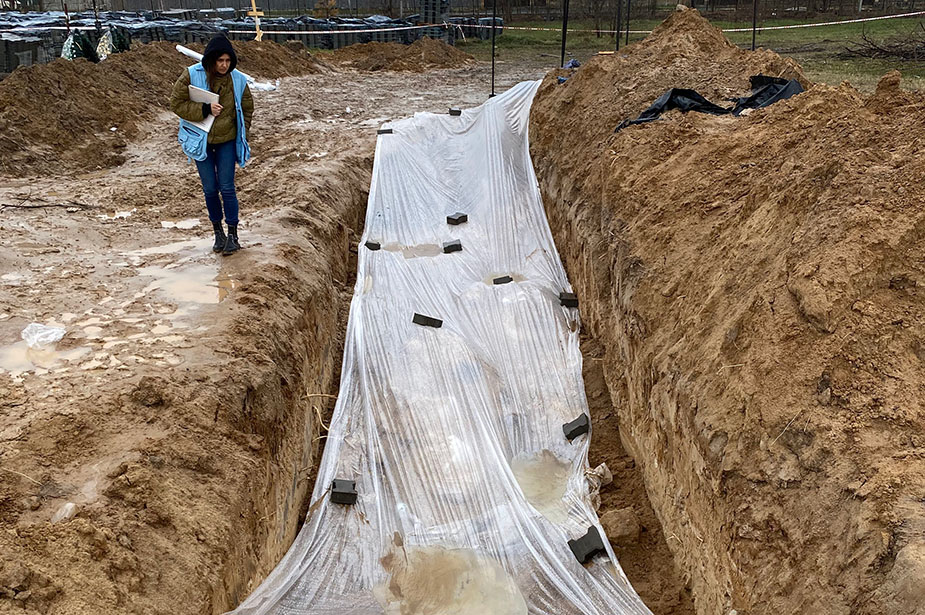
An improvised collective grave in Bucha, Kyiv region. © OHCHR
It’s only when all these checks are finished – showing that this civilian casualty happened, Olga and other human rights officers will consider the case verified.
More than just numbers
Since the beginning of the armed attack on Ukraine, the Mission has been publishing civilian casualty updates daily. As of 26 April, 2,729 people died and 3,111 were injured.
For human rights officers these updates are more than just numbers.
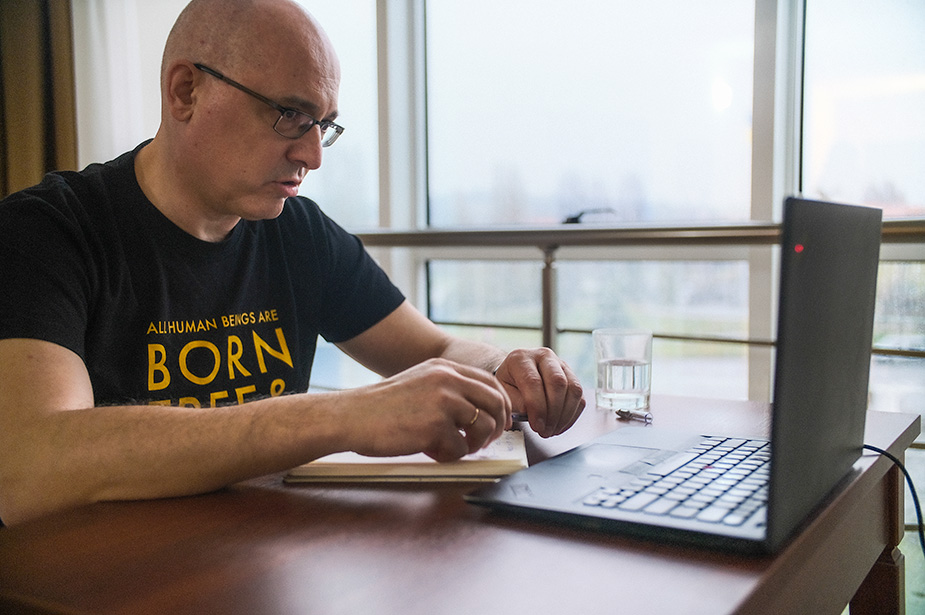
Uladzimir Scherbau, head of unit. © Michael Fostik/OHCHR
“One needs to realize that we are not working with figures — we are working with individual incidents. We try to get the information about an individual incident in which a man or woman, a boy or girl was killed or injured in a specific place, in a specific situation and from a specific weapon”, said Uladzimir Shcherbau, head of a unit of the Mission. “We keep collecting information on the cases which have been reported in previous days. It's like a mosaic — you are getting additional information, and ultimately have a full picture on what happened to civilians.”
The civilian casualty numbers provided by HRMMU have become the go-to statistics for the Governments, the media, international agencies and others reporting on or monitoring the war in Ukraine. The verified information that HRMMU provides can apply pressure that may help to prevent further violations. It also can be used by different justice mechanisms to ensure justice for victims of human rights violations, as well as hold perpetrators to account, said Matilda Bogner, Head of Mission.
“Our monitoring work is not easy as it requires a lot of patience and verification,” she said. “We need to ensure that we support victims and follow the do no harm principle. In the end, we are able to communicate what has happened, where there have been violations and how to take steps to remedy the situation and prevent further violations. The documentation that we do helps us to advocate for changes, justice for victims and accountability for perpetrators.”

An apartment damaged by shelling in Irpin, Kyiv region. After Russian armed forces left the town, OHCHR found 297 civilian buildings damaged or destroyed. © OHCHR
*Some monitoring staff in Ukraine are not fully identified for security reasons.

